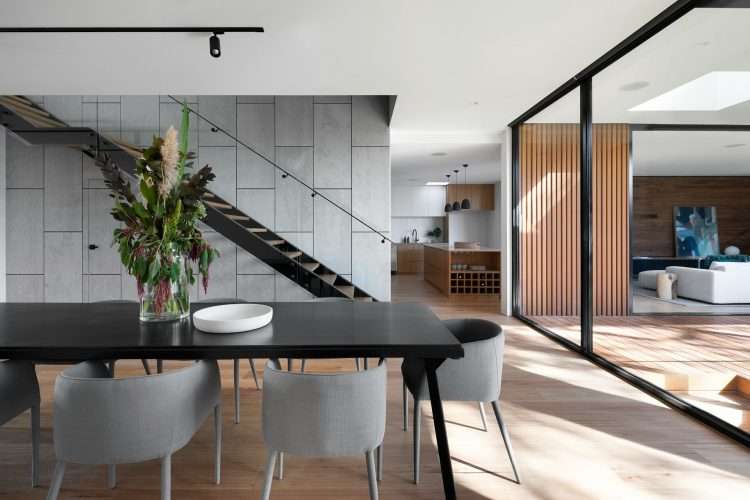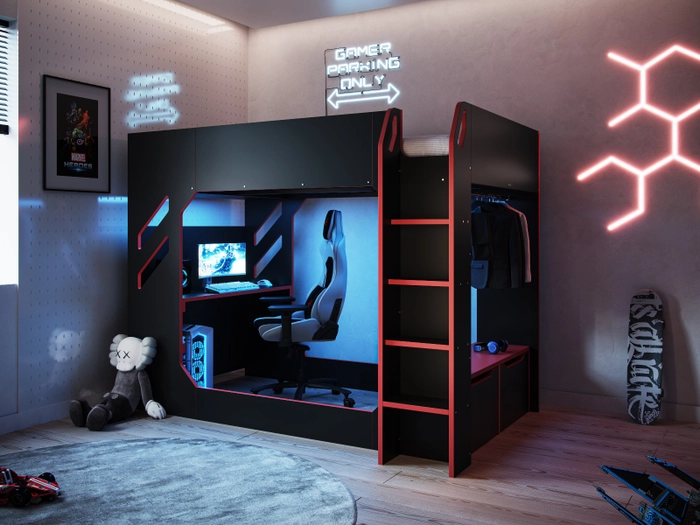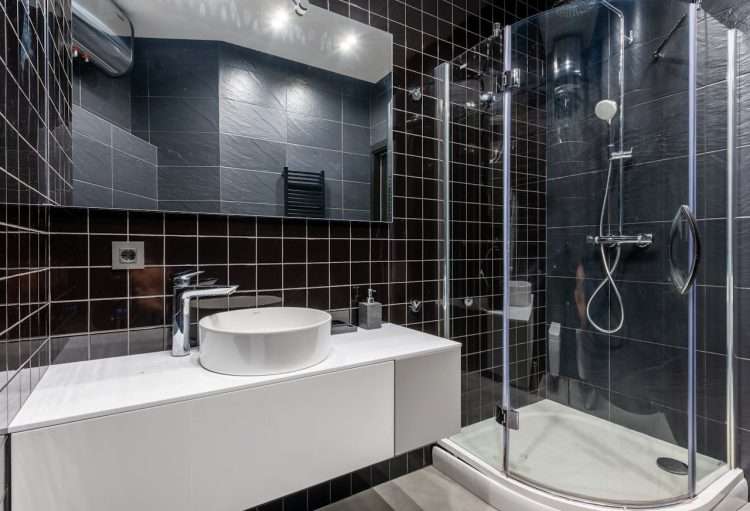It is important to foster an environment of inclusivity, especially when it comes to something as personal and intimate as your bathroom. Everyone should be able to enjoy the privacy and comfort of a properly equipped restroom.
That’s why designing accessible bathrooms with handicapped features is essential for accommodating a range of abilities – from people with cognitive disabilities to wheelchair users.
This blog post will provide you with important considerations when planning and designing your handicap-accessible bathroom: everything from layout tips to particular materials that can make all the difference for someone trying to navigate their way around. Ultimately, this will enable you to create an inclusive space where everyone feels welcome and comfortable going about their daily activities.

The importance of designing a handicap-accessible bathroom for individuals of all abilities
Having a bathroom that is accessible to individuals of all abilities is an essential aspect of modern bathroom design. It’s critical to ensure that people with disabilities, such as those with limited mobility, are given ease of access and can navigate the bathroom without difficulty.
The importance of designing a handicap-accessible bathroom cannot be overstated, as it offers people with disabilities the opportunity to maintain their independence and dignity. An accessible bathroom needs to incorporate safety features such as grab bars, non-slip surfaces, and low-height fixtures.
Specialist adaptation experts, such as EA Mobility, offer a comprehensive range of products that make a bathroom more accessible to people with disabilities. These adaptations not only improve accessibility but can also enhance the overall aesthetics of the bathroom space, making it a welcoming area for everyone.
The concept of universal design and it aims to create inclusive spaces
Universal design is more than just a current trend or a buzzword. It’s a concept aimed at creating environments that are accessible to everyone, regardless of their physical abilities. The goal is to create inclusive spaces that are functional, safe, and comfortable for all individuals, regardless of their age, size, or mobility.
Universal design acknowledges that diversity is an asset, not a liability, and that our environments should be designed with that in mind. By embracing universal design principles, we can create a world that is more inclusive, equitable, and respectful of all people’s needs and abilities.
Benefits of an accessible bathroom for people with disabilities and ageing individuals
Accessible bathrooms offer countless benefits to both disabled individuals and those in the ageing population. Here are some of the key advantages:
- Increased Independence: Accessible bathrooms allow individuals to perform their daily hygiene tasks without needing assistance. This preserves their dignity and enhances their sense of independence.
- Safety: Features like grab bars and non-slip flooring greatly reduce the risk of accidents and injuries in the bathroom.
- Comfort and Ease: Accessible bathrooms are designed with user comfort in mind. Lowered sinks, raised toilets, and spacious shower areas make the space easier and more comfortable to use.
- Versatility: Bathrooms designed with accessibility in mind are beneficial for everyone. Even those without mobility issues will find the convenient features helpful, particularly in instances of temporary injury or when hosting guests with disabilities.
- Increased Property Value: Bathrooms that are accessible and inclusive can also increase the overall value of your property. Potential buyers see the long-term benefits and are often willing to pay more for inclusive design features.
Key Elements of an Accessible Bathroom
Grab Bars
Grab bars are not only practical but are also a stylish addition to any bathroom. Whether you’re looking to prevent falls or just need some extra stability while stepping in and out of the shower, grab bars provide the necessary support you need. With a variety of finishes and styles available, you can easily find a grab bar that complements your bathroom décor.
Plus, they’re easy to install and can be used by individuals of all ages and abilities. Don’t wait until you or someone you love has an accident in the bathroom. Consider adding grab bars for a safer and more enjoyable bathing experience.
How grab bars enhance safety and stability for individuals with mobility challenges
For individuals living with mobility difficulties, simple tasks like taking a shower or getting out of bed can present a serious challenge. This is where the use of grab bars comes into play.
These sturdy, hand-held bars can be installed in different areas of the home, from the bathroom to the bedroom, to provide added safety and support. With grab bars, individuals can manoeuvre themselves confidently and independently, without the fear of slipping or falling.
This not only enhances their physical stability but also boosts their confidence – both of which are vital for maintaining a good quality of life. There’s no doubt that the addition of grab bars can greatly enhance the safety and stability of those with mobility challenges.
Different types and optimal placement of grab bars
As we or our loved ones get older, we may find ourselves needing some extra support when getting in and out of the bathtub or shower. This is where grab bars can provide a necessary aid in preventing slips and falls.
However, it’s important to choose the right type of grab bar for your needs and to install it in the optimal location. For example, vertical grab bars are great for pulling oneself up from a seated position, while horizontal grab bars are better for maintaining balance while standing.
It’s also recommended to place grab bars near the toilet and in the shower or bathtub, but only after considering factors such as the height of the user and the layout of the space. With the right selection and placement of grab bars, we can enjoy greater independence and safety in our own homes.
Wheelchair Accessibility

Design considerations for wheelchair users in an accessible bathroom
When designing an accessible bathroom, it’s essential to consider the needs of wheelchair users. With careful planning and attention to detail, you can create a space that is comfortable, safe, and welcoming to all.
One of the most crucial design considerations is ensuring that there is enough clearance around the toilet and sink for wheelchair users to manoeuvre. Additionally, installing grab bars and accessible towel dispensers will provide extra support and convenience.
Another consideration is the height of the fixtures, which should be adjusted to accommodate seated users. By taking these factors into account, you can create a functional and aesthetically pleasing accessible bathroom that meets the needs of wheelchair users.
Minimum clearances, door widths, and manoeuvring space requirements
When it comes to designing a space, it’s important to keep in mind minimum clearances, door widths, and manoeuvring space requirements. These guidelines ensure that any occupant can move about freely, without bumping into obstacles or feeling cramped.
While these dimensions may seem like small details, they can make a huge difference in the overall functionality of a space. Whether you’re designing a home, an office, or a public building, taking these minimum clearances and space requirements into consideration will ultimately result in a much more comfortable and functional environment.
Accessible fixtures and fittings, such as roll-in showers and lowered sinks
For individuals with disabilities, finding accessible fixtures and fittings in public spaces can be a challenging task. Luckily, the implementation of roll-in showers and lowered sinks has become more prevalent in recent years, providing greater accessibility for people with various mobility needs.
These modifications not only increase independence and safety for those who require them, but they also promote inclusion and equality. Accessible fixtures and fittings have a significant impact on improving the quality of life for individuals with disabilities, making public spaces more welcoming and accommodating for all.
Non-Slip Flooring
The significance of non-slip flooring in preventing accidents
Non-slip flooring plays a critical role in maintaining safe and hazard-free environments, particularly in public spaces that see high foot traffic. The significance of slip-resistant flooring is often overlooked or minimized, but the impact of accidents that arise as a result of slippery floors can be disastrous, resulting in devastating injuries, broken bones, medical bills, and even lawsuits.
The importance of slip-resistant flooring is even more pronounced in work environments where employees may operate heavy machinery or equipment that can exacerbate accidents. Choosing the right slip-resistant flooring can undoubtedly save lives, prevent injuries, and mitigate financial losses, making it an investment worth considering.
Suitable materials and textures for an accessible bathroom floor
Choosing the right materials and textures for an accessible bathroom floor is important for ensuring safety and comfort for those with mobility challenges. Slip-resistant materials, such as non-slip tiles or vinyl flooring, are ideal choices as they provide superior grip, even when wet.
Textures that are easy to clean and maintain, like smooth tiles or polished concrete, can make keeping the bathroom hygienic and tidy much easier. When selecting materials, it’s important to consider the space’s design and aesthetics to ensure that the flooring complements the overall style of the bathroom. With careful consideration and attention to detail, an accessible bathroom floor can provide both practicality and style.
Incorporating visual indicators for individuals with visual impairments
For individuals with visual impairments, navigating their environment can prove to be a challenging task. One solution to alleviate some of these difficulties is incorporating visual indicators into public spaces.
These indicators can range from tactile markings on walls and floors to audio cues that signal when an action is required, making navigation more intuitive and efficient for the visually impaired.
With these visual indicators, navigating through unfamiliar spaces becomes a less daunting task and empowers individuals to move around with greater independence and confidence. By promoting accessibility through visual indicators, we can create a more inclusive environment that accommodates the varying needs of our communities.
Using clear and concise signage for restroom facilities
Having clear and concise signage for restroom facilities is crucial for any business or public area. Signs that are easy to read and understand ensure that everyone can quickly locate the facilities they need, regardless of language barriers or disabilities.
In addition, clear signage can help prevent confusion or embarrassment, particularly in new or unfamiliar locations. Employing the use of large, bold print and universally recognisable symbols can also enhance the overall aesthetic of the space and promote a professional image.
Overall, investing in quality signage for restrooms is a small but impactful way to enhance the accessibility and functionality of any public space.
Incorporating universal symbols for accessibility
In our increasingly interconnected world, everyone must have equal access to information, regardless of their language or ability. That’s why incorporating universal symbols for accessibility is so important.
These symbols provide a visual way to convey important information that transcends cultural and language barriers. From wheelchair accessibility icons to sign language interpretations, universal symbols can make interacting with public spaces, products and services considerably more straightforward.
By embracing these symbols and making them a core part of our communication strategy, we can create a world that is more inclusive and equitable for all.
Providing information in multiple formats, such as braille or tactile signage
In today’s world, accessibility is crucial. Whether we are talking about public places or online platforms, everyone should have equal access to information. One way to make sure of this is by providing information in multiple formats, such as braille or tactile signage.
This not only helps people with visual impairments, but it also benefits those who have difficulty processing information verbally. By offering information in various formats, we can create a more inclusive and welcoming environment for everyone. So, let’s make sure that we all have access to the information we need by embracing different formats and making them available to everyone.
Comfort and Ergonomics
As the average person spends more and more time at a desk, the importance of comfort and ergonomics has come to the forefront of our attention. Those who sit for long periods need to find solutions to prevent discomfort and even long-term physical damage.
Proper ergonomics can make the difference between feeling energized at the end of the day and feeling drained. This is why investing in comfortable and ergonomic furniture is so crucial.
Attention to detail in selecting the right chair, desk, keyboard, and mouse can make all the difference in ensuring that your workdays are productive and pain-free. A focus on comfort and ergonomics shows how much we value our health and wellness, not just during work, but in every aspect of our lives.
Sensory Considerations
Addressing sensory needs, such as sound reduction and privacy
The world is a noisy place, and sometimes we just need some peace. Whether it’s from construction outside or a chatty coworker, dealing with excessive noise can be a frustrating experience. Furthermore, privacy is something that we all value, particularly in public spaces. There’s nothing worse than feeling exposed or watched when you need privacy the most. Addressing these sensory needs can greatly improve productivity and peace of mind.
With a variety of strategies available, such as soundproofing and partitioning, it’s easier than ever to create a space that caters to your sensory preferences. Finding ways to bring some tranquillity and privacy into your environment can do wonders for your mental and emotional well-being.
Creating a calming environment for individuals with sensory sensitivities
Individuals with sensory sensitivities often experience overwhelming feelings in environments that are too bright, loud, or cluttered. Creating a calming environment is crucial for these individuals to feel safe and relaxed. A calming environment can include soft lighting, neutral colour tones, and minimal visual distractions.
Soft textures and comfortable furniture can also help individuals feel more at ease. Soundproofing or white noise machines can be useful for those who are particularly sensitive to noise. Taking the time to create a calming environment can greatly improve the quality of life for individuals with sensory sensitivities.
Inclusive Design for All Ages and Abilities
The importance of considering the needs of all age groups in bathroom design
When it comes to bathroom design, it’s crucial to consider the needs of all age groups. Whether it’s an elderly person who needs support while showering or a young child who requires a step stool to reach the sink, everyone should feel comfortable and safe in this space.
There are numerous ways to accomplish this, from installing grab bars and non-slip flooring to designing floating vanities that are accessible for wheelchair users. By prioritizing accessibility and functionality in bathroom design, homeowners can ensure that guests of all ages can use the space with ease. After all, a bathroom should be a sanctuary for relaxation and personal care, no matter your age or abilities.
Design strategies to accommodate children, elderly individuals, and individuals with disabilities
Designing spaces that can accommodate children, elderly individuals, and people with disabilities is no easy feat. It’s a challenge but one that is essential if we want to create inclusive communities.
One thing to keep in mind is that no two individuals are the same. For instance, when designing a space for children, we have to take into account their varying ages and interests. Similarly, when catering to elderly individuals, we have to think about their unique needs as they relate to mobility and comfort.
Design strategies that consider individuals with specific disabilities, such as visual or auditory impairments, can ensure their safety and ease of navigation. Ultimately, the focus should be on creating spaces that are functional, comfortable, and inclusive.
Conclusion
Inclusive and functional handicap accessibility bathrooms are not only for those with physical disabilities, but also for those of all abilities. Ultimately, creating such a bathroom design is a way of expressing love, care and respect toward those with physical limitations, ensuring that everyone can experience life in their unique way.
Remember to always keep the “human first” mindset when it comes to designing accessible bathrooms. By considering details down to the location of accessible switches or textured flooring materials, you can make sure that every user benefits from your efforts in making the world just a bit more inclusive and comfortable.
Architecture is an art form and as we venture further into the 21st century, let us reclaim this right for everyone, regardless of disability or any other social determinant. Try considering these tips today to create a better-accessibility environment for those around you!





Leave a Reply